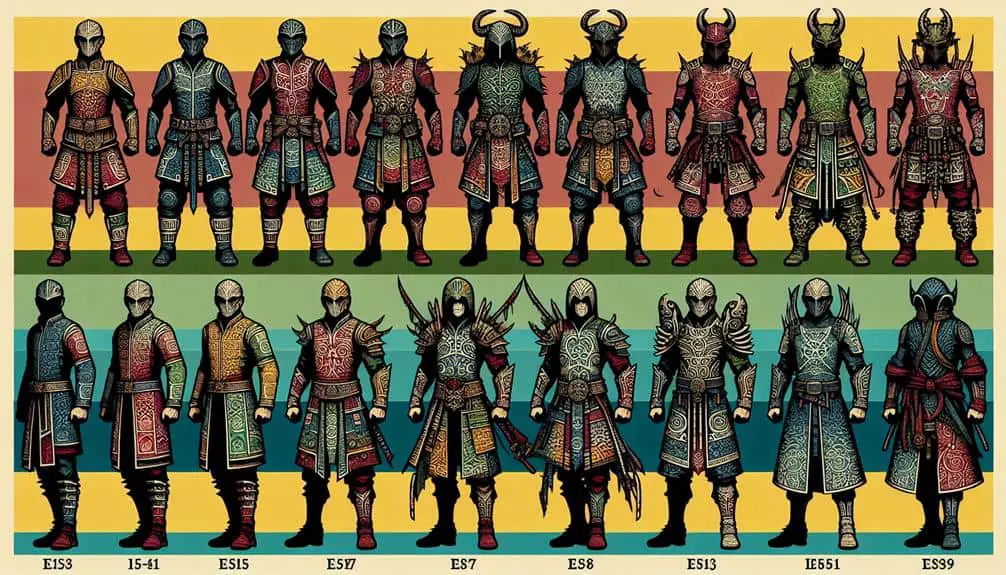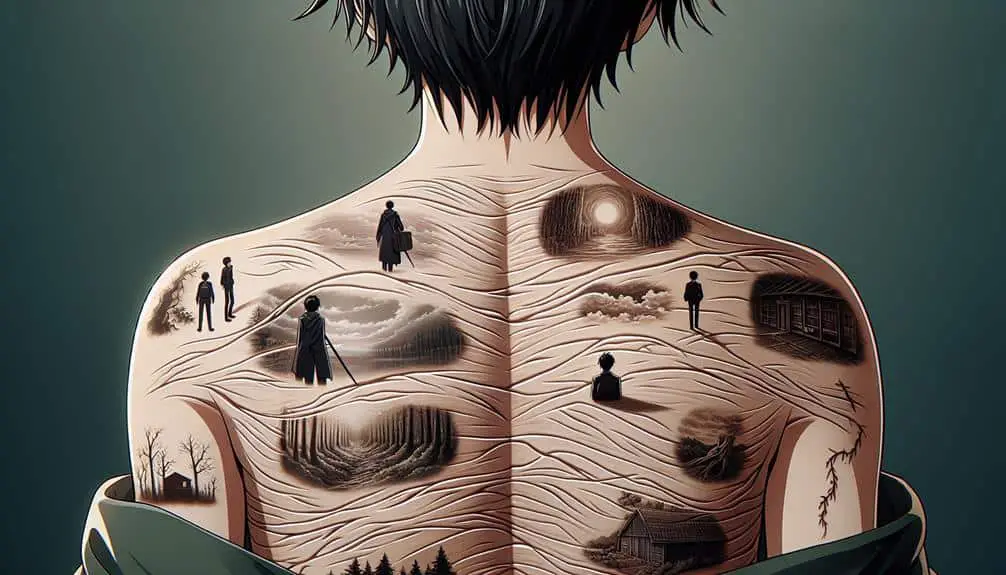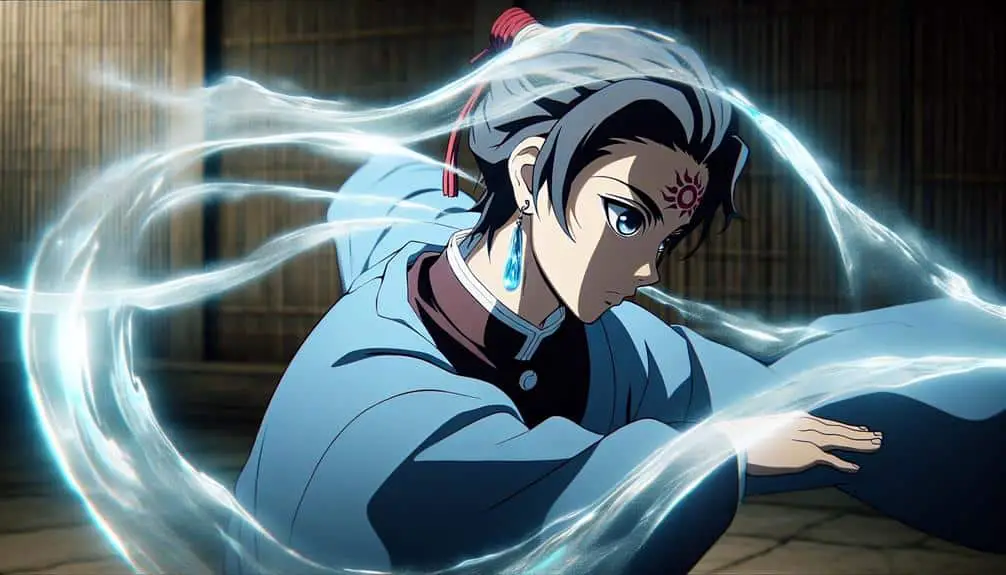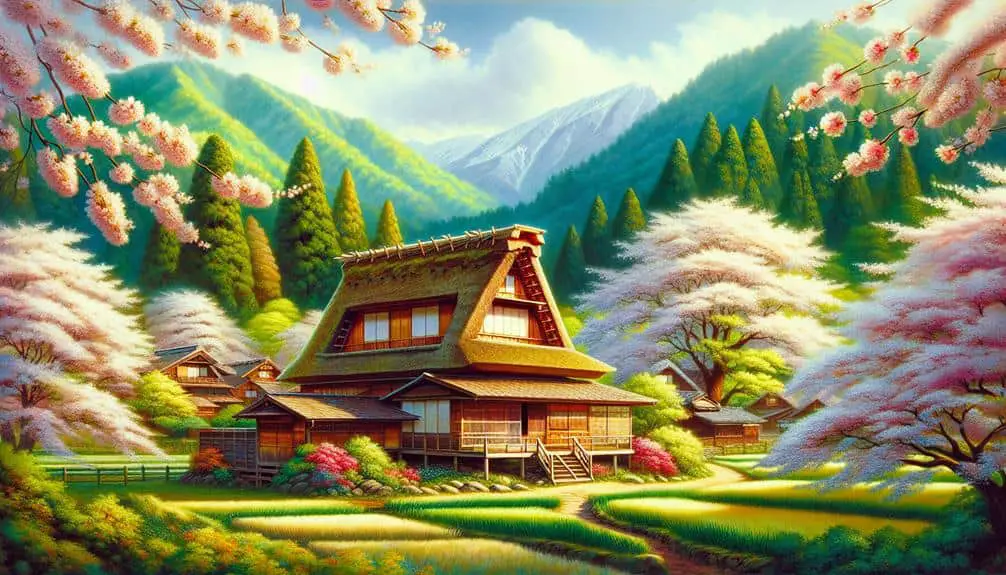Explore the evolution of Hashira uniform designs in Demon Slayer. From ancient traditions to modern innovations, the attire embodies historical influences and cultural symbolism. Traditional elements like Japanese patterns merge with cutting-edge textile technology. Each detail, from intricate embroidery to symbolic colors, reflects the depth of Japanese history. The uniforms not only mirror the pillars' growth and strength but also highlight their unique abilities. Discover how these garments go beyond mere clothing, representing a rich tapestry of tradition and innovation. Unravel the layers of meaning woven into every stitch and pattern.
Key Points
- Hashira uniforms blend ancient traditions with modern aesthetics.
- Incorporation of traditional Japanese patterns and motifs in uniform design.
- Advanced textile technology enhances functionality and comfort in battles.
- Symbolism in attire reflects individual strengths and status within the organization.
- Evolution of uniforms mirrors growth and development of Hashira, symbolizing their authority.
Hashira Uniform Origins
The origins of the Hashira uniforms in Demon Slayer can be traced back to ancient traditions and historical influences that have shaped their distinctive design. These uniforms aren't merely costumes but reflections of a deep-rooted cultural history that resonates through each intricate detail. The Hashira, or Pillars, are elite demon slayers who embody strength, skill, and honor, and their attire symbolizes these qualities.
Historically, the Hashira uniforms draw inspiration from traditional Japanese garments worn by warriors and nobility. The incorporation of layered robes, hakama pants, and haori jackets reflects a blend of practicality and elegance seen in historical attire. The use of specific colors and patterns can also be linked to symbolic meanings derived from ancient customs and beliefs.
Furthermore, the intricate embroidery and symbols adorning the uniforms pay homage to historical figures and events that have shaped the world of Demon Slayer. Each element serves a purpose beyond aesthetics, connecting the wearer to a lineage of warriors and traditions that transcend time. The Hashira uniforms stand as a reflection of the rich tapestry of influences that have converged to create their iconic design.
Traditional Elements Incorporated
Amidst the intricate design of Hashira uniforms in Demon Slayer, what traditional elements are seamlessly incorporated to enhance their significance and symbolism?
The Hashira uniforms in Demon Slayer aren't only visually striking but also deeply rooted in traditional elements that add layers of meaning to their design. Influenced by Japanese culture and history, these uniforms blend modern aesthetics with craftsmanship techniques that have been passed down through generations.
One of the key influences in the design of Hashira uniforms is the use of traditional Japanese patterns and motifs. These motifs, such as the iconic hexagonal pattern symbolizing protection and the swirling cloud patterns representing power and agility, are carefully integrated into the fabric of the uniforms. The craftsmanship techniques employed in creating these intricate designs showcase the attention to detail and skill of the artisans behind the garments.
Modern Adaptations and Innovations
Incorporating cutting-edge textile technology, the Hashira uniforms in Demon Slayer showcase modern adaptations and innovations that elevate their functionality and aesthetic appeal. These modern adaptations include the use of advanced breathable fabrics that enhance mobility during battles, allowing the Hashira to move swiftly and perform intricate sword techniques with ease. The incorporation of moisture-wicking materials helps in keeping the warriors dry and comfortable even during intense combat situations, highlighting a fusion of modern comfort with traditional design.
Furthermore, cultural influences play a significant role in shaping these modern adaptations. Designs inspired by traditional Japanese armor are merged with contemporary tailoring techniques to create a harmonious blend of heritage and modernity in the Hashira uniforms. The intricate embroidery and patterns on the uniforms pay homage to Japan's rich cultural history while embracing modern trends in fashion and functionality, appealing to both traditionalists and those with a keen eye for innovation. As a result, the Hashira uniforms stand as a demonstration of the seamless integration of modern advancements and cultural heritage in the realm of anime costume design.
Symbolism in Hashira Attire
Symbolism subtly weaves through every stitch and detail of the Hashira attire in Demon Slayer, conveying deeper meanings and cultural significance beyond mere aesthetics. Each element of the Hashira uniform holds symbolic weight, reflecting the pillars' roles and characteristics within the Demon Slayer Corps. The intricate patterns adorning their haori symbolize the unique abilities and strengths of each Hashira, serving as a visual representation of their individuality and prowess. The color palette chosen for each Hashira's uniform isn't arbitrary; it carries specific meanings tied to traditional Japanese symbolism, such as bravery, wisdom, or purity.
Additionally, the accessories worn by the Hashira, like the distinctive earrings or belts, further emphasize their rank and responsibilities within the organization. Moreover, the symbols embroidered on their attire often hold historical or mythological significance, subtly nodding to the rich cultural tapestry of Japan. By donning these meticulously crafted uniforms, the Hashira embody not only their fighting prowess but also the traditions and values they uphold, making their attire a powerful symbol of their dedication to protecting humanity from demons.
Impact of Uniform Evolution
The evolution of the Hashira uniforms in Demon Slayer hasn't only changed their appearance but has also significantly influenced the perception and representation of the pillars within the Demon Slayer Corps. The evolution impact of these uniforms goes beyond mere aesthetics; it signifies a shift in the way Hashira are perceived by both characters within the series and viewers.
As the uniforms evolved, becoming more intricate and detailed, they began to mirror the growth and development of the Hashira themselves, symbolizing their strength and dedication to their cause. This evolution has played a vital role in enhancing the hierarchical structure within the Demon Slayer Corps, with the uniforms now serving as a visual representation of the pillars' status and authority.
Moreover, the uniform significance extends to how each Hashira is uniquely represented through their attire, showcasing their individual strengths and characteristics, adding depth to their personas and enriching the overall narrative of Demon Slayer.




